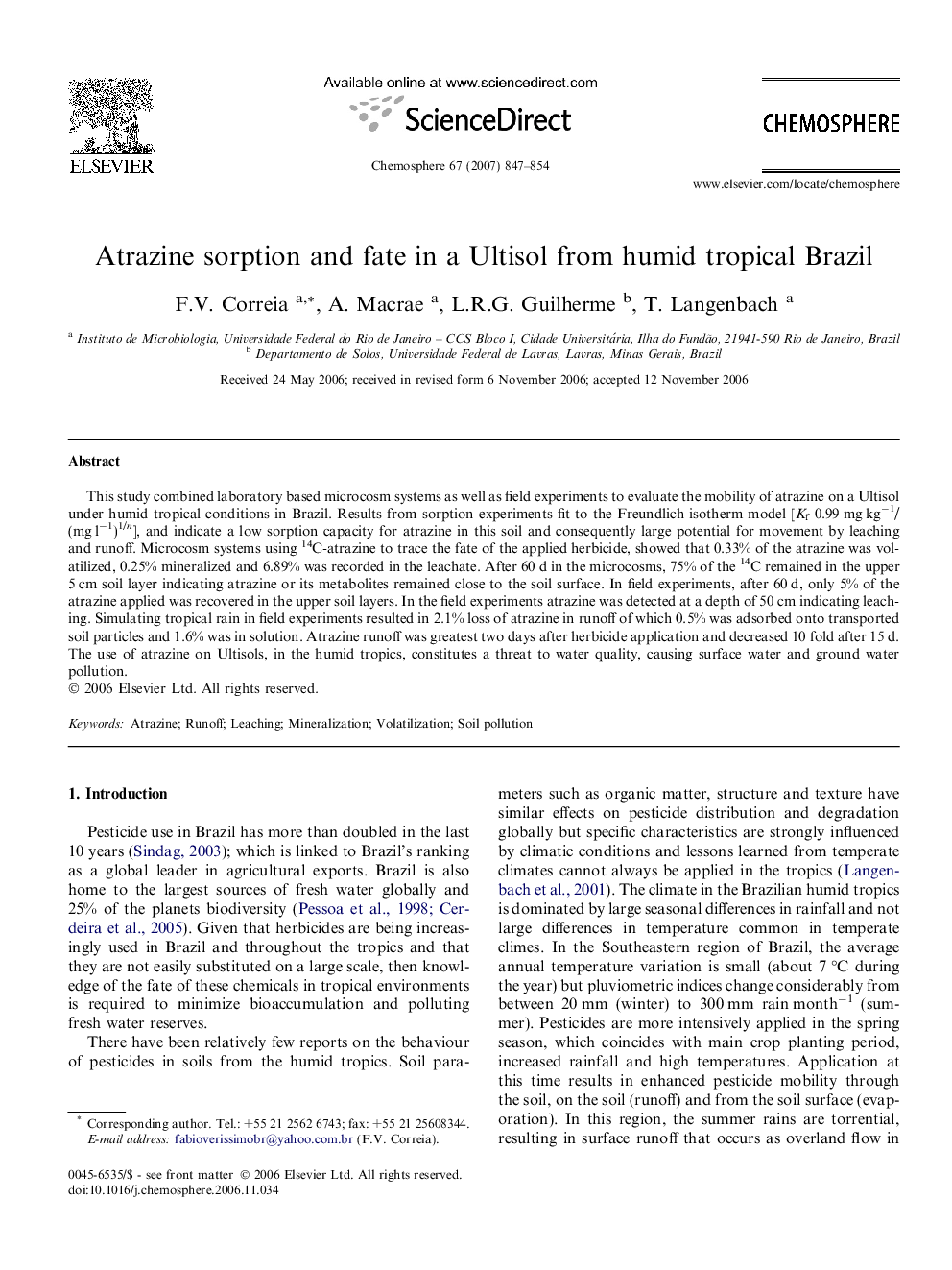| Article ID | Journal | Published Year | Pages | File Type |
|---|---|---|---|---|
| 4415520 | Chemosphere | 2007 | 8 Pages |
This study combined laboratory based microcosm systems as well as field experiments to evaluate the mobility of atrazine on a Ultisol under humid tropical conditions in Brazil. Results from sorption experiments fit to the Freundlich isotherm model [Kf 0.99 mg kg−1/(mg l−1)1/n], and indicate a low sorption capacity for atrazine in this soil and consequently large potential for movement by leaching and runoff. Microcosm systems using 14C-atrazine to trace the fate of the applied herbicide, showed that 0.33% of the atrazine was volatilized, 0.25% mineralized and 6.89% was recorded in the leachate. After 60 d in the microcosms, 75% of the 14C remained in the upper 5 cm soil layer indicating atrazine or its metabolites remained close to the soil surface. In field experiments, after 60 d, only 5% of the atrazine applied was recovered in the upper soil layers. In the field experiments atrazine was detected at a depth of 50 cm indicating leaching. Simulating tropical rain in field experiments resulted in 2.1% loss of atrazine in runoff of which 0.5% was adsorbed onto transported soil particles and 1.6% was in solution. Atrazine runoff was greatest two days after herbicide application and decreased 10 fold after 15 d. The use of atrazine on Ultisols, in the humid tropics, constitutes a threat to water quality, causing surface water and ground water pollution.
